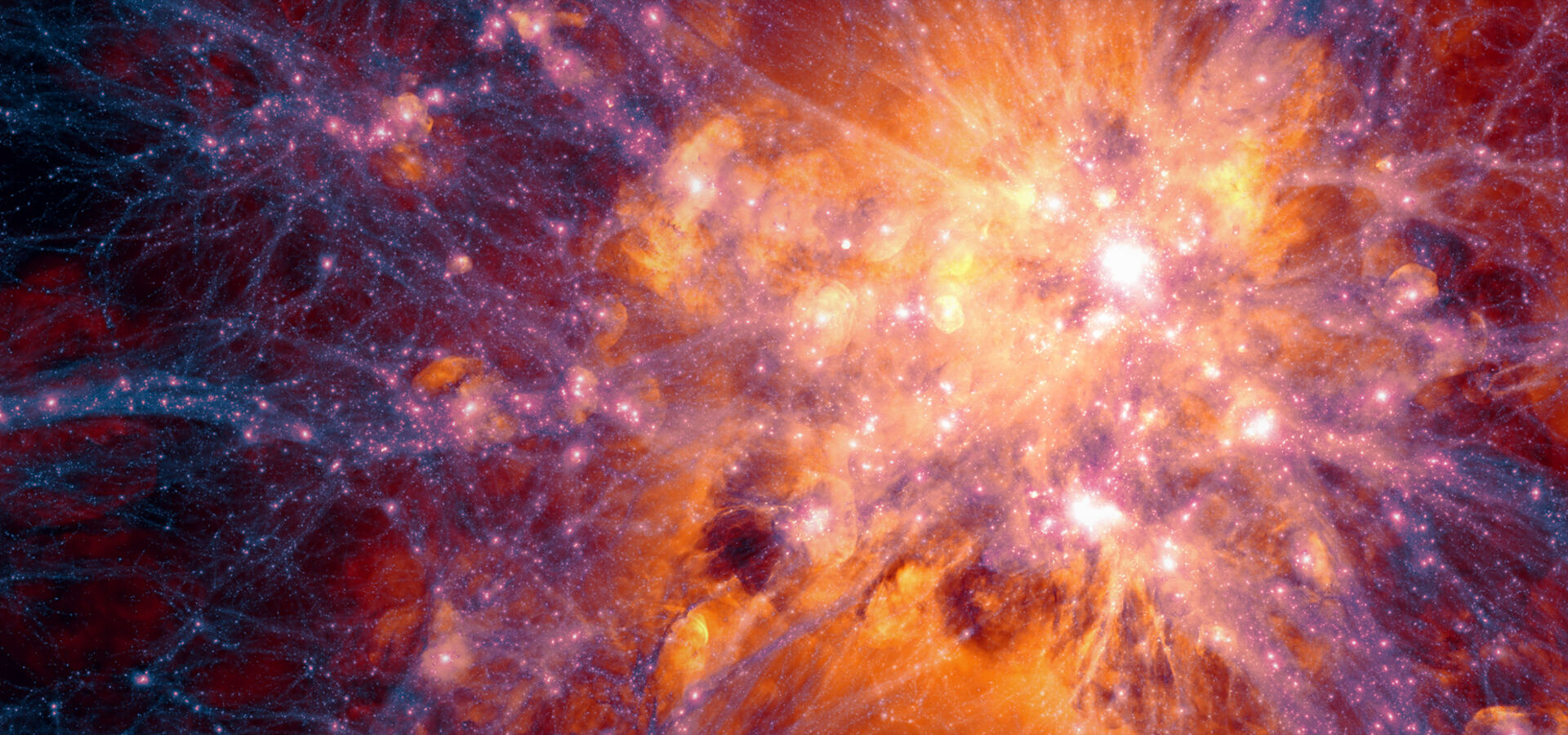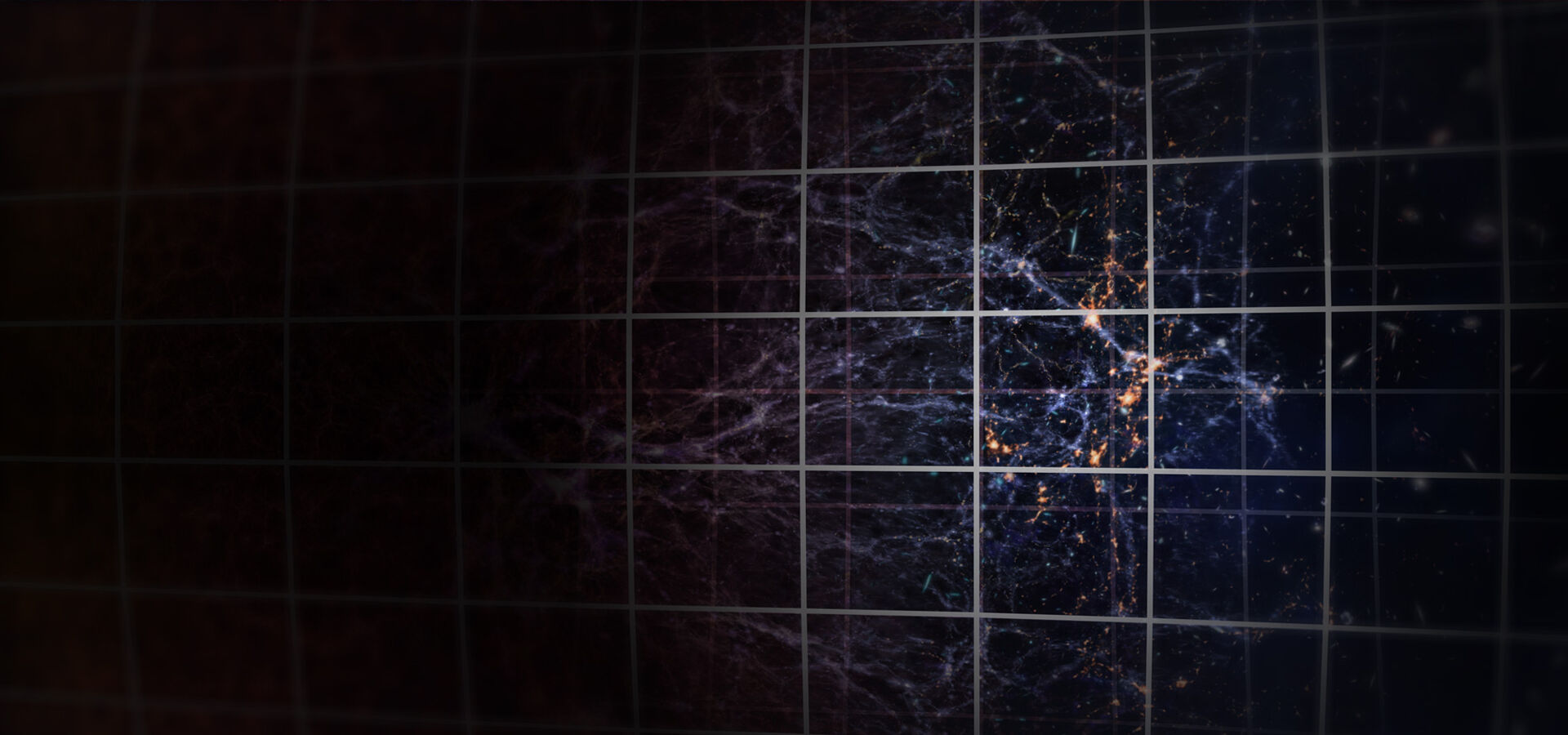
European
Southern
Observatory


What we see around us — the planets, stars and dust in between them — makes up just 5% of the Universe.
The rest is invisible dark matter and a mysterious dark energy that is thought to be causing the Universe to expand faster and faster. When this accelerating expansion was discovered in the 1990s, it completely challenged what we thought we knew about the laws of the Universe. The ELT will finally give us a way to search for, identify and ultimately characterise the new physics that is waiting to be unearthed.
The rest is invisible dark matter and a mysterious dark energy that is thought to be causing the Universe to expand faster and faster. When this accelerating expansion was discovered in the 1990s, it completely challenged what we thought we knew about the laws of the Universe. The ELT will finally give us a way to search for, identify and ultimately characterise the new physics that is waiting to be unearthed.
What we see around us — the planets, stars and dust in between them — makes up just 5% of the Universe.
The rest is invisible dark matter and a mysterious dark energy that is thought to be causing the Universe to expand faster and faster. When this accelerating expansion was discovered in the 1990s, it completely challenged what we thought we knew about the laws of the Universe. The ELT will finally give us a way to search for, identify and ultimately characterise the new physics that is waiting to be unearthed.
Galaxies rotate fast. So fast that the gravity generated by stars, dust and gas could not possibly hold them together. This led astronomers to believe that galaxies are surrounded by a halo of invisible dark matter, but despite being suggested almost 100 years ago, the nature of this dark matter remains enigmatic. The ELT will be able to peer at the dark matter halos around distant galaxies, to help us understand how much of each galaxy is made up of dark matter, and perhaps finally understand what exactly this strange substance is made of.
Dark matter makes up around a quarter of the Universe, but the even more mysterious dark energy makes up about 70%. In the 1920s, astronomer Edwin Hubble made revolutionary observations that provided the first direct evidence that the Universe was expanding, or that other galaxies are moving away from us and away from each other. For a long time, this expansion was assumed to be slowing down due to the gravitational pull that all matter in the Universe exerts on all other matter. However, in the 1990s a team of astronomers made the shocking discovery that the expansion is actually accelerating.
This discovery profoundly changed cosmology because it suggested that there is another component in the Universe that we cannot see, but that is acting against gravity and pushing space apart. We have named this component dark energy, but it remains a mystery. It suggests our theories of cosmology and particle physics are incomplete (or possibly incorrect) and that new physics is out there, waiting to be discovered. A key task for the next generation of astrophysical facilities is to search for, identify and ultimately characterise this new physics.
Ironically, the simplest form of such a dark energy is the cosmological constant that was introduced by Einstein when he was trying to ensure that his theory of general relativity allowed for a non-expanding Universe, the accepted view at the time. As it happens, the theory of general relativity with the cosmological constant actually explains the accelerating expansion very well. Alternatively, it has been proposed that general relativity should be replaced with a modified theory of gravity, which would explain the accelerating expansion and the formation of structures in the early Universe by a different behaviour of gravity on the largest scales.
The ELT will provide unique contributions towards deciding whether general relativity or a modified theory of gravity best describes the expansion of the Universe, including testing the behaviour of gravity in unexplored regimes, as well as mapping the expansion history of the universe.
To understand our Universe we need to understand what’s driving its acceleration, which requires astronomers to determine the expansion history of the Universe. The ELT will revolutionise the way we measure the acceleration of the Universe allowing us to unravel the mysteries of dark energy.
Standard probes of the expansion of the Universe include weak gravitational lensing and the signature that light imprinted shortly after the Big Bang on today’s distribution of galaxies, and type Ia supernovas. The ELT will contribute to current efforts to measure the acceleration of the Universe by characterising high-redshift Type Ia supernovas identified by James Webb Space Telescope and other survey facilities.
But the ESO telescope will also map the expansion history of the Universe using a whole different method, by watching the Universe expand in real time.
Extracting information about the Universe’s expansion from standard probes relies on assumptions about the curvature of space, depends on the adopted cosmological model, and can only estimate the average expansion history over long time periods. A model-independent approach that measures the expansion rate directly was proposed as early as the 1960s, but limitations in technology have meant that astronomers have not been able to make such a measurement in practice. This approach is known as redshift drift, and is a method that offers a truly independent and unique approach to exploring the expansion history of the Universe. The redshift of the spectra of distant objects is an indication of the expansion of the Universe, so the change in this redshift over time is a measure of the change in the rate of expansion. However, the estimated size of this redshift drift over a decade is only about 10 cm/s. Such a signal is about 10–20 times smaller than today’s large telescopes can measure in such distant galaxies. The huge light-collecting area of the ELT, coupled with new developments in quantum optics to record ultrastable spectra, means that this amazing measurement now lies within reach.
Astronomers will use the redshift drift method with the ELT’s ANDES instrument to determine the accelerating expansion of the Universe directly, thereby allowing us to quantify the nature of the dark energy responsible for the acceleration. Once a first epoch of observations is made, the redshift drift signal grows linearly with time. Hence, in the very long run (on the timescale of many decades) the redshift drift may well overtake the ability of other methods to constrain the expansion history of the Universe.
Apart from the fundamental conceptual importance of directly observing the Universe’s expansion, the redshift drift provides a new and crucial consistency test of the assumptions of our theories of cosmology. Two other such tests that will be significantly improved by the ELT are measurements of the temperature of the cosmic microwave background radiation and the primordial abundances of light elements.
The ELT will also help us gather clues about the other component of the dark Universe, dark matter, by helping to measure the shape of dark matter halos.
Astrophysical evidence for dark matter halos around galaxies first emerged in the 1930s with studies of galaxy rotation curves, which plot the velocities of stars and gas against their distance from the centre of their host galaxy. Such studies still play an important role today. They require high-resolution observations of kinematics from the inner parts of galaxies to it to constrain the distribution of baryonic — or visible — mass. At higher redshifts, rotation curves are not currently resolved enough to constrain the fraction of dark matter. However, using data from the SINFONI and KMOS instruments on ESO’s Very Large Telescope, two recent studies tried to do this in the inner regions of distant galaxies using both seeing limited and adaptive optics-assisted observations, as well as stacking several images together to reduce noise. Their results point towards a low fraction of dark matter, a finding that is supported by the observation of decreasing rotation curves. However, these results remain controversial because the signal-to-noise ratio is low, and the spatial resolution is rather coarse.
The ELT’s HARMONI will be the first instrument able to reach the spatial resolution needed to disentangle the visible matter distribution from the dark matter distribution for high redshift galaxies. Mass model distributions will provide the measurements of dark halo central density and core radius for galaxies in a redshift range that is not reachable with 8–10-metre class telescopes. Astronomers will be able to use the ELT to measure the shape of dark matter halos as a function of galaxy mass assembly history, cosmology, and environments. Detailed simulations show that HARMONI will be able to study spatially resolved kinematics with sufficient details and signal to noise ratio to perform mass models and recover the shape of dark matter halos down to stellar masses of 109 solar masses at redshift 1.4 and 109.5 solar masses at redshift 2.7 using the Hα line in just 2 hours of exposure. A multi-object spectrograph like the ELT’s MOSAIC instrument will allow us to expand the statistical sample of galaxies, as well as extending studies of rotation curves and dark matter profiles.
We use cookies that are essential for accessing our websites and using our services. We also use cookies to analyse, measure and improve our websites’ performance, to enable content sharing via social media and to display media content hosted on third-party platforms.
The European Organisation for Astronomical Research in the Southern Hemisphere (ESO) is the pre-eminent intergovernmental science and technology organisation in astronomy. It carries out an ambitious programme focused on the design, construction and operation of powerful ground-based observing facilities for astronomy.
This Cookies Policy is intended to provide clarity by outlining the cookies used on the ESO public websites, their functions, the options you have for controlling them, and the ways you can contact us for additional details.
Cookies are small pieces of data stored on your device by websites you visit. They serve various purposes, such as remembering login credentials and preferences and enhance your browsing experience.
Essential cookies (always active): These cookies are strictly necessary for the proper functioning of our website. Without these cookies, the website cannot operate correctly, and certain services, such as logging in or accessing secure areas, may not be available; because they are essential for the website’s operation, they cannot be disabled.
Functional Cookies: These cookies enhance your browsing experience by enabling additional features and personalization, such as remembering your preferences and settings. While not strictly necessary for the website to function, they improve usability and convenience; these cookies are only placed if you provide your consent.
Analytics cookies: These cookies collect information about how visitors interact with our website, such as which pages are visited most often and how users navigate the site. This data helps us improve website performance, optimize content, and enhance the user experience; these cookies are only placed if you provide your consent. We use the following analytics cookies.
Matomo Cookies:
This website uses Matomo (formerly Piwik), an open source software which enables the statistical analysis of website visits. Matomo uses cookies (text files) which are saved on your computer and which allow us to analyze how you use our website. The website user information generated by the cookies will only be saved on the servers of our IT Department. We use this information to analyze www.eso.org visits and to prepare reports on website activities. These data will not be disclosed to third parties.
On behalf of ESO, Matomo will use this information for the purpose of evaluating your use of the website, compiling reports on website activity and providing other services relating to website activity and internet usage.
Matomo cookies settings:
Additional Third-party cookies on ESO websites: some of our pages display content from external providers, e.g. YouTube.
Such third-party services are outside of ESO control and may, at any time, change their terms of service, use of cookies, etc.
YouTube: Some videos on the ESO website are embedded from ESO’s official YouTube channel. We have enabled YouTube’s privacy-enhanced mode, meaning that no cookies are set unless the user actively clicks on the video to play it. Additionally, in this mode, YouTube does not store any personally identifiable cookie data for embedded video playbacks. For more details, please refer to YouTube’s embedding videos information page.
Cookies can also be classified based on the following elements.
Regarding the domain, there are:
As for their duration, cookies can be:
Cookie settings: You can modify your cookie choices for the ESO webpages at any time by clicking on the link Cookie settings at the bottom of any page.
In your browser: If you wish to delete cookies or instruct your browser to delete or block cookies by default, please visit the help pages of your browser:
Please be aware that if you delete or decline cookies, certain functionalities of our website may be not be available and your browsing experience may be affected.
You can set most browsers to prevent any cookies being placed on your device, but you may then have to manually adjust some preferences every time you visit a site/page. And some services and functionalities may not work properly at all (e.g. profile logging-in, shop check out).
The ESO Cookies Policy may be subject to future updates, which will be made available on this page.
For any queries related to cookies, please contact: pdprATesoDOTorg.
As ESO public webpages are managed by our Department of Communication, your questions will be dealt with the support of the said Department.